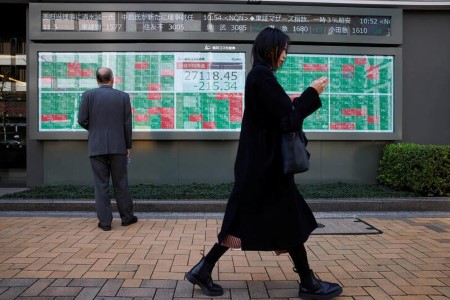




Policy Rate Updates: Double cut finale
 DOWNLOAD
DOWNLOAD

Monthly Economic Update: One for the road
 DOWNLOAD
DOWNLOAD

Inflation Update: Still low, still slow
 DOWNLOAD
DOWNLOAD


Adjusting to a new, higher yield world

Aug 18 – Japanese inflation grabs the Asian economic data spotlight on Friday as investors close out a bruising week marked by a soaring US dollar, rising global bond yields, and crumbling equity markets.
The gloom enveloping markets will not have been lifted by the news late on Thursday that Chinese property developer Evergrande, the most indebted developer in the world, filed for bankruptcy protection in the US.
With the nominal 10-year US Treasury yield a whisker from printing its highest level since 2007 and the inflation-adjusted ‘real’ yield already the highest since 2009, there is a growing sense that the post-2008 world of ultra-low interest rates and borrowing costs might be gone for good.
At the very least, investors are nervous and scrambling to adjust to the higher yield environment. A poor auction of 20-year Japanese Government Bonds on Thursday – one of the worst in decades, according to some analysts – only deepened the sense of anxiety.
Figures on Friday are expected to show that core consumer price inflation in Japan eased to a 3.1% annual rate in July from 3.3% in June.
The Bank of Japan is in a tight spot. It is reluctant to take another step back from ultra-loose monetary policy until it is sure the economy is out of deflation for good, but the yen’s weakness is raising expectations the BOJ will have to spend billions from its FX reserves to support the currency.
The dollar rose to 146.50 yen on Thursday, and the euro this week rose above 159.00 yen for the first time since 2008.
Japan’s second-quarter growth smashed expectations thanks to booming exports, but July trade figures suggest that engine is already sputtering. Exports fell last month, and perhaps more importantly, shipments to China tumbled 13.4%.
The People’s Bank of China insists it will keep liquidity reasonably ample and retain “precise and forceful” policy to support the economy. But given the tightening of financial conditions around the world, investors remain wary.
The 10-year US Treasury yield is above 4.30%, a whisker from highs not recorded since 2007 and the 10-year real yield at almost 2.0% is already at levels last seen in 2009. The dollar index is at a two-month high and has risen 4% in a month.
This is taking its toll – financial conditions across emerging markets are the tightest since early December, according to Goldman Sachs’s EM financial conditions index, and risk assets are getting pounded.
The MSCI World, Asia ex-Japan, and Emerging Market indexes are all down 11 of the last 13 sessions, and all three are having their worst months since September last year.
The weekend can’t come quickly enough.
Here are key developments that could provide more direction to markets on Friday:
– Japan inflation (July)
– Malaysia GDP (Q2)
– Malaysia trade, retail sales (July)
(By Jamie McGeever; Editing by Josie Kao)
This article originally appeared on reuters.com





 By Reuters
By Reuters